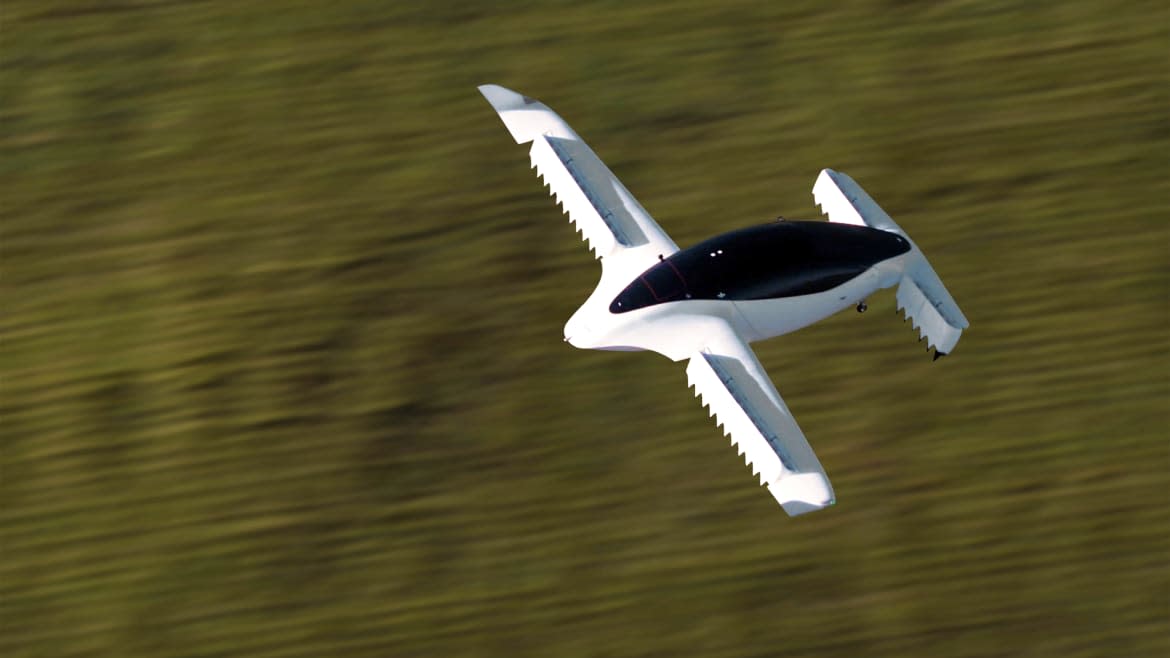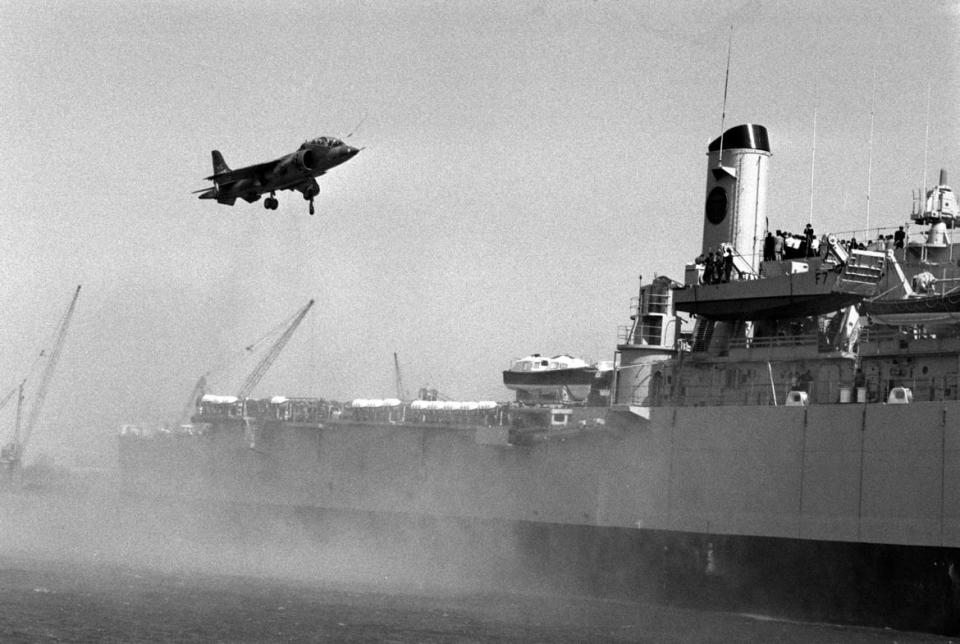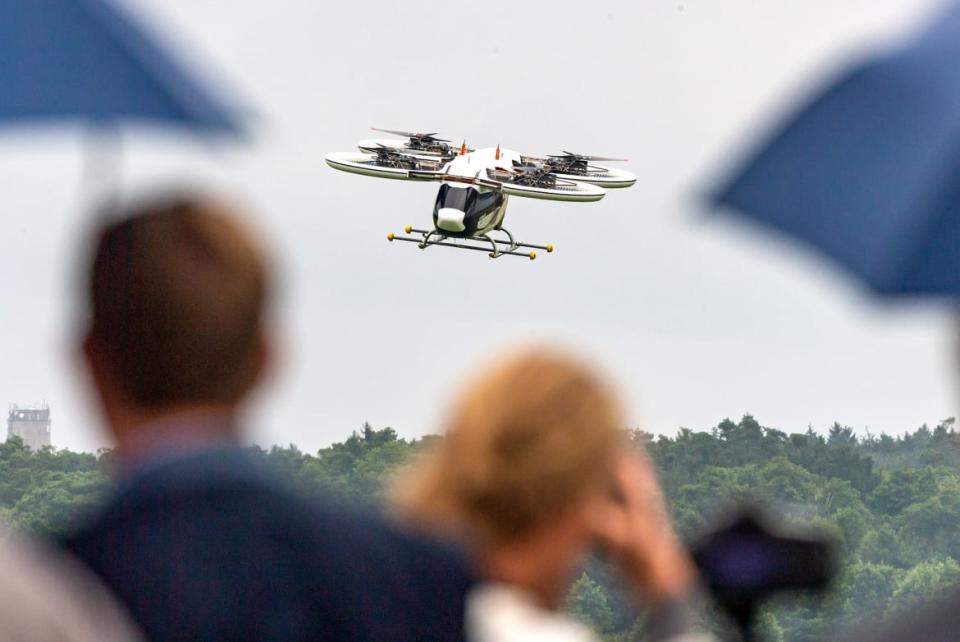Air Taxis Will Turn All of America Into Flyover Country

“Roads and bridges” has become shorthand for America’s pitiful infrastructure. Of the $1 trillion package finally passed by the House, just $110 billion actually goes to ground infrastructure. The program comes late. Decades of neglect and underfunding have left us with the scaffolding of the past century, not a framework for this one. Compared to other advanced economies, we’re playing catchup rather than leaping ahead. (China is building 162 new airports, we have built none this century.)
That’s why the people who have the means are putting money into alternative infrastructure, allowing them to skip the roads and bridges and the whole off-ramp tangle. Like so many of our social assets, access to comfortable travel won’t be equitable, because the future will come with a premium price tag. This is part of a post-pandemic phenomenon described by the editor of the Financial Times magazine How To Spend It as “the flight to quality.”
Nothing illustrates this better than what is touted under the euphemism of “urban mobility.” This offers—for those able to afford it—a new way of avoiding the multiple miseries of ground travel in America (not to mention unraveling airline schedules). Welcome aboard the world of eVTOL—literally meaning electric-powered vertical takeoff and landing, combining the agility of a helicopter and the speed of a commuter jet in a new kind of flying machine.
70 Years in the Making
Plain old VTOLs began in the 1950s as a British military project, debuting in the 1960s as the Harrier jump-jet and later as the U.S. Marine Corps’ AV8B. They rose vertically from a small pad or carrier deck and then transitioned into streaking, dart-like fighters. As spectacular as this was, the technology was too complex and costly at the time to adapt to non-military use.

A Harrier coming in to land on the HMS Fearless at Greenwich.
Yet the appeal was always obvious. No runway was necessary, and neither was an airport. In theory, if this machine could be simplified, it could satisfy a long-nurtured fantasy of futurism: the flying taxi. (Just not in the form of a car with wings, as was often portrayed.)
It was adding the “e” to VTOL that changed everything.
For a while, I was a skeptic. Promising “leaps” in technology don’t always work out. Most of the small privately owned airplanes buzzing about our skies are still powered by piston-engines that differ little from engines developed during World War II. Efforts to replace them with small, lightweight jets have never really panned out. Same goes for dreams to reintroduce airships as massive as zeppelins, sans the possibility of becoming a fireball like the Hindenburg. It’s always tempting for engineers to dream up a new machine and then wonder what practical use it can actually serve.
That was my reservation about eVTOL. Now, not so much.
One prototype in particular got my attention because it was unlike any other: the brainchild of German start-up Lilium. Many eVTOL firms, like California-based Joby Aviation, use a system similar to the U.S. military’s (insanely expensive) V-22 Osprey, where the vehicle uses wing-mounted engines that tilt back and forth. The propellers work like helicopter blades for vertical flight and switch to horizontal for cruise. (Unlike the Osprey, the electric engines have no emissions and are relatively quiet.) It has a conventional body for a small aircraft, able to carry four passengers.
The Lilium concept doesn’t use propellers. Instead, it features a very sleek capsule flanked by 36 small electric turbofans buried in the wings. The aircraft not only boasts more aerodynamic efficiency and smoother flight controls, but—it’s also a much quieter ride. Lilium has now flown five generations of autonomous prototypes. The latest is large enough for a pilot and four passengers. The next version, intended to introduce taxi flights, will carry six passengers.
Holding Pattern
So will air taxis become a reality soon? Wall Street seems to believe so. In the first eight months of this year, investors committed $4.3 billion to air taxi start-ups. Lilium has a NASDAQ listing and one of its major backers is Baillie Gifford, an investor that was an early backer of SpaceX, Tesla, Spotify and Airbnb. Morgan Stanley chose Joby Aviation as a hot stock likely to rise by at least 80 percent in value in the next year.
But as sexy as all this is, it’s important to appreciate the leap of faith involved in going from autonomous prototypes to test flights with a pilot, passengers and baggage and, far more significant to the costs, on to a production line. Even more sobering is the difference between demonstration flights and the reality of operating high-frequency taxi flights, day and night—to do that requires not just a robust and safe machine but an entirely new infrastructure.
The FAA must reconfigure air traffic control corridors. Air taxis will need their own piece of sky, to cruise at heights up to 10,000 feet. At lower altitudes they will have to be safely separated from airline traffic around airports as well as private aviation and helicopters—in all weathers. All this will be particularly demanding of resources (and funds) because it comes at a time when old ground-based radar systems are giving way to more precise satellite-directed navigation aids—in effect, a new generation of air traffic control technology meets a new generation of air traffic.
At the same time, operators have to build a chain of “vertiports” that can process passengers as well as recharge batteries fast enough for speedy turnarounds. As with all electric transportation, battery range is critical. Lilium is promising a range of 155 miles at a cruise speed of 175 mph on a single charge. Rival Joby claims a range of 150 miles at a higher speed of 200 mph.
The Customer Is Always Rich
It’s easy to see where all this is heading. The U.S. routes that most obviously fit these numbers and could deliver the kind of well-heeled customers keen to be first-adopters of eVTOLs are the fat-cat air corridors now served by private jets and helicopters—Miami to Palm Beach, Los Angeles to Palm Springs and, of course, Manhattan to the Hamptons.
That same “flight to quality” crowd would obviously love the same comforts for moving between city centers and major airports, where a 15-minute hop in the air would replace an hour or more of gridlock on the ground. (Lilium just announced that one of its first vertiports will be in Palm Beach, and claims that by 2024 it will have 14 ready to operate in Florida. That deadline reeks of the kind of hubris that is common to all the start-ups.)
If eVTOLs do achieve the kind of critical mass necessary to become a permanent industry, they will do so at the expense of helicopters. In 2019 the global market for helicopters was worth more than $48 billion. The average price of a helicopter is $1.8 million, but one fit to carry Logan Roy and the whole Succession cavalry can cost as much as $27 million. They also guzzle gas, and because of their complexity need incessant and impeccable maintenance to be safe.
In contrast eVTOL technology is deep green. The relative quietness is, against the racket of helicopters, a real environmental asset in the kind of city center locations being scouted for vertiports—and a vertiport probably needs no more real estate than, say, four gas stations. There is an obvious appeal, too, in using this technology for air ambulances and law enforcement, but that, too, would need a new round of public funding.

A test flight of a "CityAirbus" flying taxi model.
Looking at the big picture, air taxis do really seem like the final missing link in the infrastructure that elites dream of as they determine how they want to fly in the future, and leave the rest of us behind. For them, the pandemic was a turning point. More than 70 percent of the world’s private jet market is in the U.S. Demand soared as airline bookings, especially in first and business class, tanked. That switch continues at warp speed: Netjets, the world’s largest marketer of seats on private jets, is waitlisting new customers. They just ponied up $1.2 billion for 100 new jets. (Eventually, eVTOLS could meet some of that demand for shorter trips between cities.)
The dream doesn’t end there. Corporate titans have a new trophy in mind: supersonic travel at 1,300 mph, at 50,000 feet high. As I reported in June, Boom Supersonic, a Denver-based start-up, is planning a supersonic jet capable of flying from Los Angeles to Sydney in eight hours and 30 minutes instead of 14 hours and 30 minutes at subsonic speeds. United Airlines have ordered 15 of them, and United’s CEO, Scott Kirby, promised that the jets will be net-zero carbon from Day One, optimized to run on 100 percent sustainable aviation fuel. (Today’s private jets generate 20 percent more carbon dioxide per passenger mile than commercial jets. According to a new study by European environmental researchers, the richest 1 percent will be responsible for 16 percent of total emissions by 2030.) Supersonic jets would not require a new air traffic control infrastructure from the FAA, as eVTOL does.
This raises a serious question about social priorities. Why should public funds be used, through the FAA, to lift elites above the decay of a ground infrastructure that millions of Americans have to endure every day? Surely, that money would be better spent on fixing the many inadequacies of mass transit.
According to a new joint report by the Institute for Policy Studies and Americans for Tax Fairness the one percenters have seen their wealth soar during the pandemic—America’s billionaires are, alone, worth $5 trillion, a jump of 70 percent. Given an opening, plutocrats will always arrange the world to their own convenience. Minimum-friction mobility is a priority for them. And the longer it takes to fix the decrepitude of American infrastructure, the faster privileged alternatives to regular transportation will be adopted. As Irving’s First Law of Aerodynamics puts it, those with money will always fly over those who don’t have much money.
Got a tip? Send it to The Daily Beast here
Get our top stories in your inbox every day. Sign up now!
Daily Beast Membership: Beast Inside goes deeper on the stories that matter to you. Learn more.

